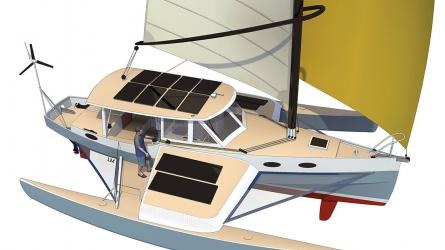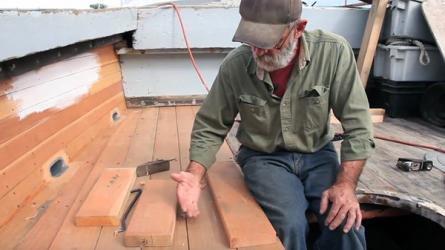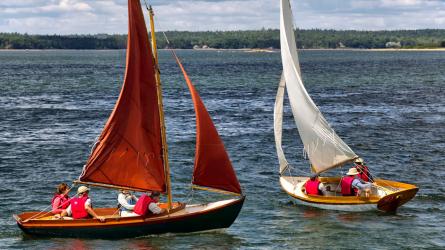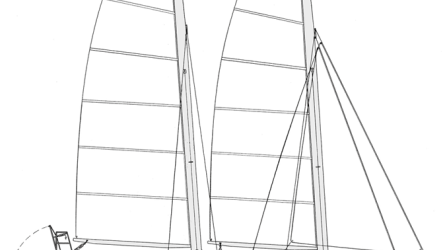January / February 2020
Restoring Schooner MARY E
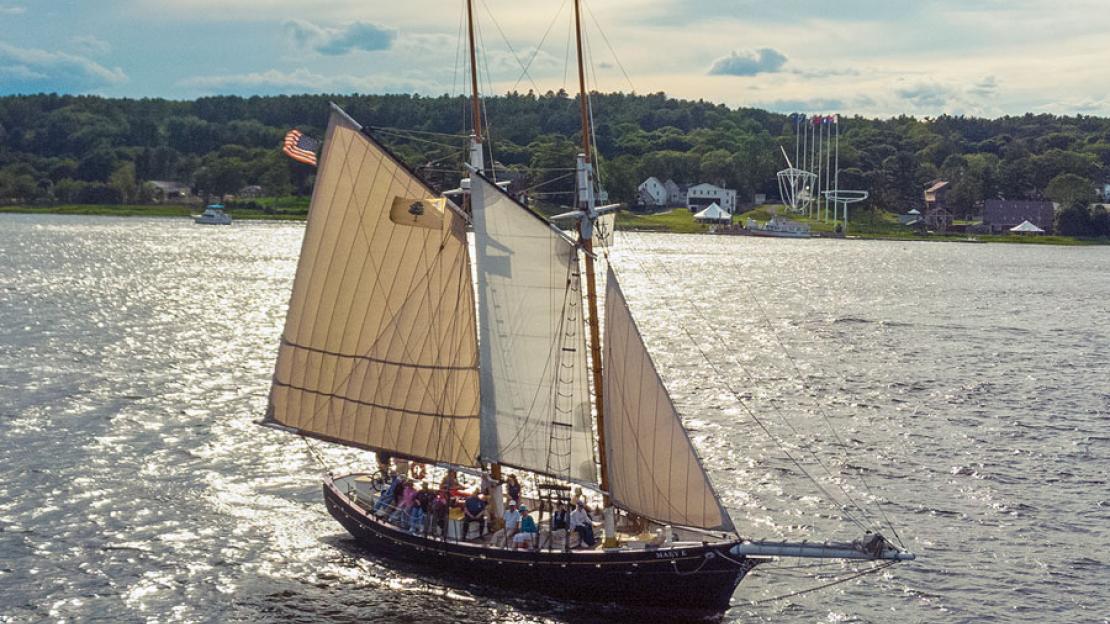
MARY E, a 58' LOD schooner built in Bath, Maine, in 1906, arrived at Maine Maritime Museum in spring 2017 for a thorough reconstruction led by Andros Kypragoras. She was relaunched in 2018 and named to the National Register of Historic Places in September 2019.
When the schooner MARY E arrived in Bath, Maine, after being sailed up the New England coast from Essex, Connecticut, she was welcomed with a party and then hauled out and trailered to the grounds of the Maine Maritime Museum. There, Maine shipwright Andros Kypragoras (see WB No. 252 about his restoration of schooner BOWDOIN) and a small crew, which included me, were hired to carry out the job of restoring her as accurately as possible to her original 1906 appearance. She was to serve the museum’s collection as an operating passenger vessel and a vestige of the area’s deep-rooted shipbuilding past, and it was clear from the moment we first saw her that this would not be a simple job. The vessel had lost a great deal of her shape, which included a badly sagging stern, skewed stem, asymmetrical hull, and general unfairness throughout. MARY E’s framing and planking below the turn of the bilge had been replaced in 2006. Therefore, that part of the hull was sound and could remain as the starting point from which to reestablish the shape of her topsides.
Restoring that shape would require a strategic approach, as her current state was a mere suggestion of the hull that once existed. She’d been subjected to over a century’s worth of hard use, countless repair jobs, and at least one major rebuild. Over time, the succession of repairs progressively created a solidly distressed and misshapen structure, and the imperfections had been locked into portions of the vessel. MARY E would need to have her interior components and deck completely removed, planking stripped off, and all topside framing replaced in order to correct her shape.
MARY E was designed by her builder, Thomas Hagan, and like most builders of small coastal working schooners during his era, he more than likely worked without construction drawings. Consequently, the only visual reference we had to work from were two artist’s renderings that were produced about a year after she was launched. Both were somewhat rough depictions, and although they provided some valuable information about her general deck layout and other important details, they were not helpful as a reference for reproducing the hull accurately. With that, our aim was basically to true up and fair what existed, and rebuild to this corrected shape, starting with her stern counter and stem.
To read the rest of this article:
Click the button below to log into your Digital Issue Access account.
No digital access? Subscribe or upgrade to a WoodenBoat Digital Subscription and finish reading this article as well as every article we have published for the past 50-years.
ACCESS TO EXPERIENCE
Subscribe Today
1 YEAR SUBSCRIPTION (6 ISSUES)
PLUS ACCESS TO MORE THAN 300 DIGITAL BACK ISSUES
DIGITAL $29.00
PRINT+DIGITAL $42.95
Subscribe
To read articles from previous issues, you can purchase the issue at The WoodenBoat Store link below.
 Purchase this issue from
Purchase this issue from




